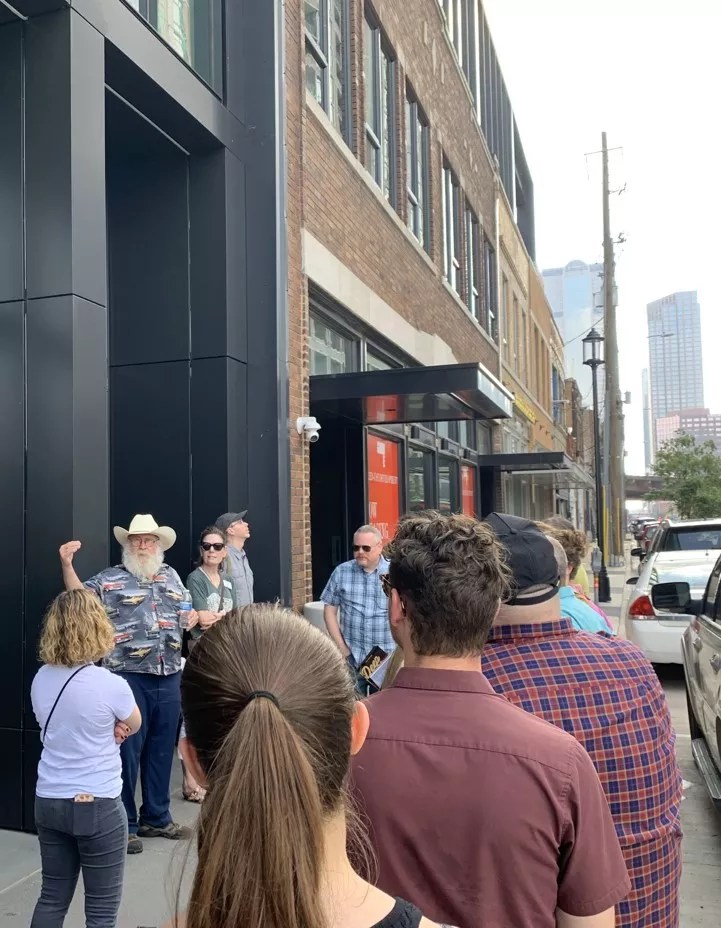
Daniel Rockey/Kathy Tran

Audio By Carbonatix
Deep Ellum turned 150 years old this year, and it just got its birthday present.
The Deep Ellum Foundation announced this week that the Deep Ellum district is now part of the National Park Services’ National Register of Historic Places.
“It’s recognition,” says Stephanie Hudiberg, the executive director of the Deep Ellum Foundation. “It’s just nice to be on the map if you will, to be recognized as a historic district with all the historic districts across the country. It’s appropriate for Deep Ellum to be recognized as a historic district.”
The National Register of Historic Places is an official list of U.S. locations “worthy of preservation,” according to the its website.
The designation also opens new opportunities to raise awareness about Deep Ellum preservation efforts and for accessing public funds to help maintain historically significant buildings and areas.
“It enables us to have individual properties within historic districts that are able to apply for federal grant dollars to protect and rehabilitate their buildings, which is exciting,” Hudiberg says. “It opens more opportunities for property owners to go through that process because it can be expensive and time-consuming.”

Jay Brakefield, second from left, gives a history tour of Deep Ellum.
Amber LaFrance
Hudiberg says the foundation has been working nearly three years to get Deep Ellum recognized as a historic place and credits the nonprofit group Preservation Dallas with “much of the credit because this is their bailiwick.”
In addition to protection for historic buildings and sites, placement in the Historic Registry provides special guidance and aid to property owners to maintain the historical integrity of their sites. Property owners can apply for funds equal to 45% of a preservation project between state (and now federal) funds thanks to the designation, says Preservation Dallas past president Jason Harper.
“With all those incentives, we hope the tide will return and people will invest in the community that’s there, and not replace those historic buildings,” Harper says. “People think Deep Ellum is always going to be Deep Ellum, but it is under imminent threat to become something far different.”
Having access to new programs and grants can encourage land and property owners to step up their preservation efforts and keep Deep Ellum looking and operating like Deep Ellum.
“Hopefully over time, property developers will get behind it and actually want to restore their buildings,” Harper says. “The public understands the situation, and all building owners will recognize the importance of what they have and that there’s business opportunities with what we have.”
The National Register of Historic Places is just one of many efforts underway to educate and continue Deep Ellum preservation efforts for Dallas’ most popular place for live music and an area with a strong connection to the city’s history.
The Deep Ellum Foundation is amassing a collection of historical artifacts for its Deep Ellum Community Center and Archive. It includes more than 150 items, a working recording studio, and artifacts and art pieces by Chicago artist Louis Paeth, who made ads promoting some of Deep Ellum’s earliest and most popular artists such as blues legend Blind Lemon Jefferson. The Foundation will also start offering historical tours of the neighborhood hosted by author Jay Brakefield, who co-wrote the Deep Ellum chronicle Central Track: Where Cultures Converged with Alan Govenar.
“This is a great thing for Deep Ellum,” Harper says. “The strongest way to preservation is to leverage the community.”
Hudiberg says that more programs and initiatives are in the works thanks to Deep Ellum’s new historic designation status.
“What’s really exciting about it is it’s really energizing our historic initiatives coming down the pike,” Hudiberg says. “It’s a wonderful jumping off point to invite people to Deep Ellum and learn about its rich history. It’s just the start for us.”